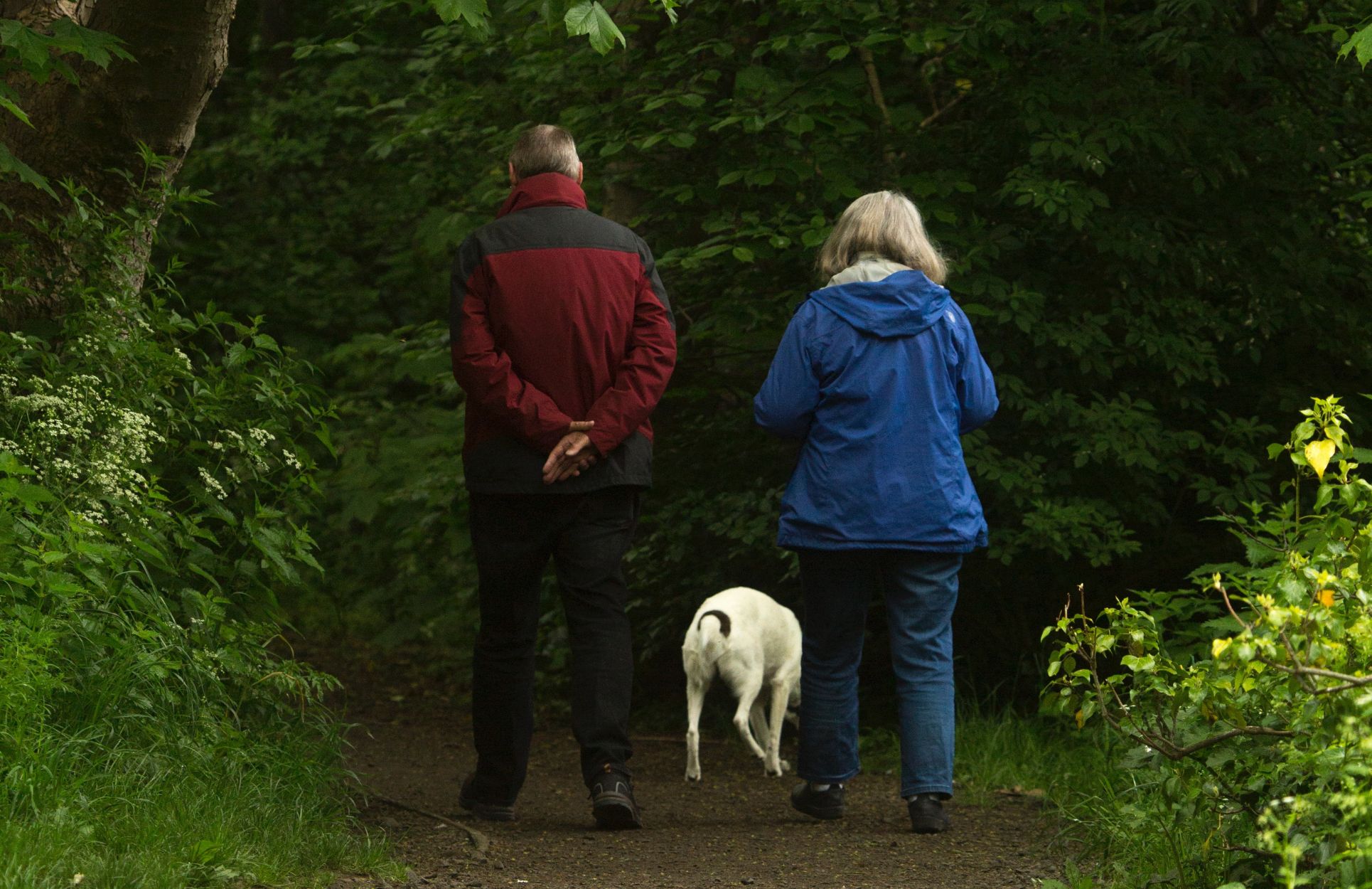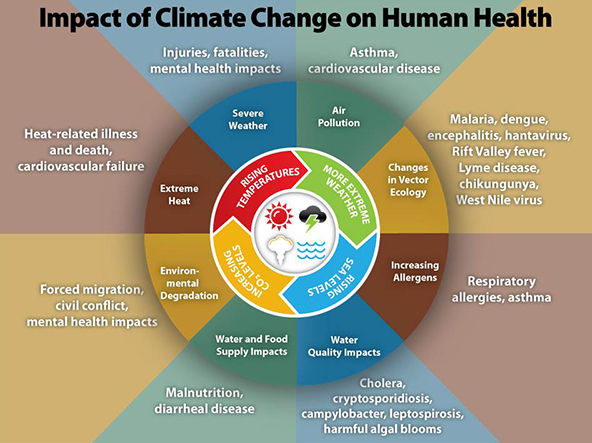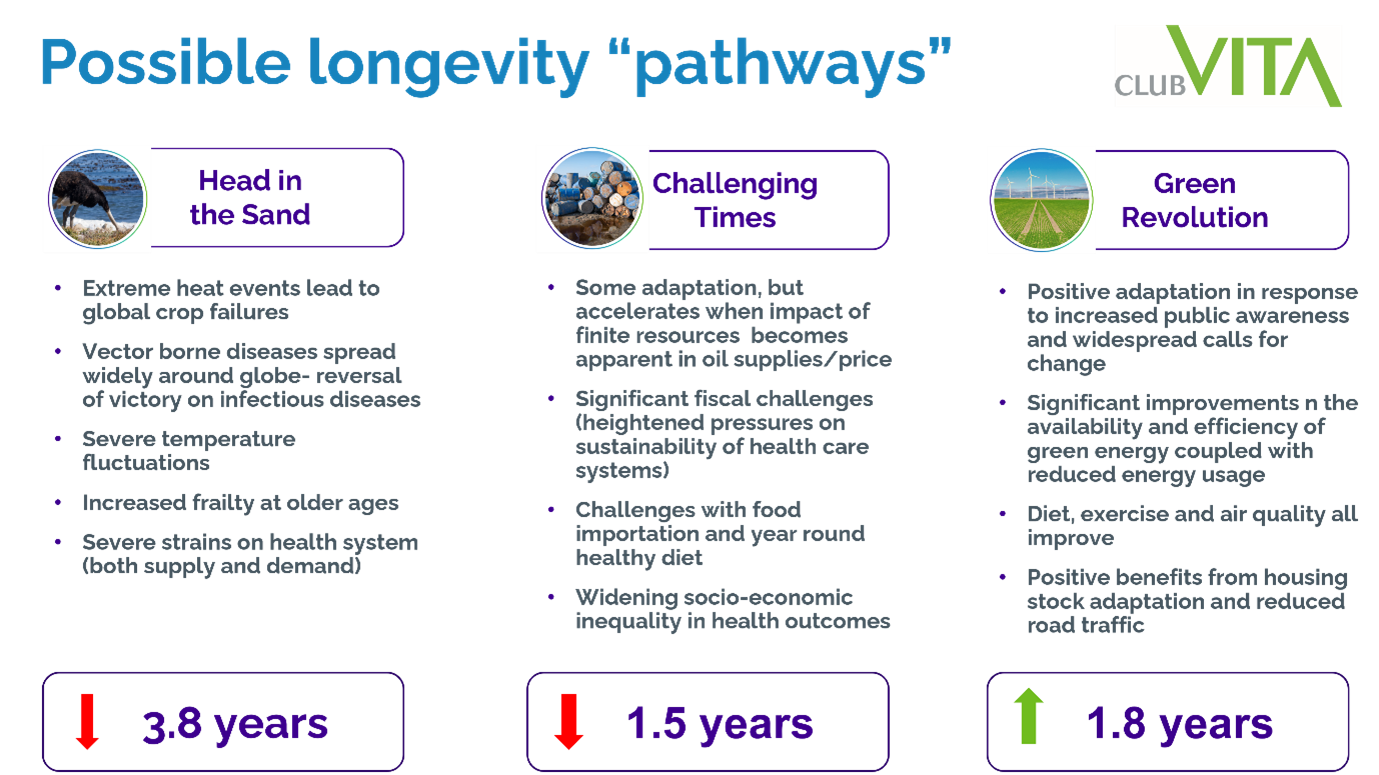 David Sinclair, Chief Executive of the International Longevity Centre, explores longevity – the missing link in the climate change debate
David Sinclair, Chief Executive of the International Longevity Centre, explores longevity – the missing link in the climate change debate
Has climate change become something that is happening to us that we don't know how to control? Has recent history shown climate change to be something we simply don't have the collective will to counter? Should we now focus our efforts on the consequences, mitigating actions and avoidance? No – and yes.
To answer ‘yes’ would mean admitting defeat, which we simply cannot do. At the UN Biodiversity Conference COP15, António Guterres, Secretary-General of the United Nations said: “Humanity’s war on nature is ultimately a war on ourselves.” And this, of course, is a war we must not lose.
One way forward is to reframe the agenda and link it more closely to demographic change. The problem for social and economic policymakers and actors is that all too often the short-term pressures are all persuasive – and result in sticking-plaster solutions.
Inaction around climate change – and ageing populations – is where short-term thinking and long-term consequences collide for individuals, businesses, and governments alike. Meeting the challenges of climate change and our ageing populations calls on us all to assess the risks and act before the economic and environmental consequences of failure are irreversible.
Last year the Institute and Faculty of Actuaries and ILC held a joint webinar to explore how healthy ageing across the life course might be affected by climate change, and how longer lives might help or hinder tackling environmental challenges.
The impacts of climate change, directly and indirectly, affect human health and longevity, and longevity will impact on our ability to respond to climate change.
On a direct level, the effects of climate change, such as heatwaves, floods and storms, can have immediate and devastating impacts on human health, leading to injury and even death. As the frequency and intensity of these events continue to increase due to climate change, more people will be at risk of harm.
Indirectly, climate change impacts human health and longevity through its effects on the natural environment. As temperatures rise and extreme weather events become more common, the spread of infectious diseases, such as malaria and dengue fever, will likely increase. These diseases have serious health consequences and will disproportionately affect vulnerable populations, such as older people, younger people and people with existing health conditions.
“You can’t have healthy people on an unhealthy planet”
– Hannah Pathek, Director of UK and Europe, Forum for the Future
The drivers behind climate change, such as pollution and habitat destruction, lead to the drivers of poor health, such as declining air and water quality, and loss of biodiversity. Any pre-existing vulnerability – age, education, poverty – will be exacerbated by climate change, leading to shortened lifespans and loss of livelihoods.
Furthermore, climate change impacts the global economy and food security, disrupting food production and supply chains, potentially leading to food insecurity and malnutrition. This can have serious health consequences, particularly for vulnerable populations. In addition, conflict is often driven by chasing resources. Some estimates are that there will be 1.2 billion climate migrants by 2050. Older people may be less able to move from war zones or from areas most affected by climate change.

Source: George Luber, US Center for Disease Control and Prevention via IAA Resource and Environment Working Group.
A sticking point in the debate and action around climate change, whether perceived or real, is the conflict between generations. Too often, the climate emergency is pitched simplistically as a source of conflict between young and old. This ignores the fact that any meaningful response to the climate and nature crises must cut across populations, regardless of age and generation. We need to amend the narrative from older people as ‘casualties’ and ‘contributors’ to ‘champions’ of climate change, and promote a new narrative where all ages are engaged in climate action.
A lot of what needs to happen focuses on individual behaviour; however, it doesn’t serve anyone to make this an issue which polarises the generations. There is an unhelpful perception that older people don’t ‘get’ climate change and its urgency, but there are 80-year-olds in Extinction Rebellion and the first climate activists are now in their 70s, for example, 77-year-old Rabbi Jeffrey Newman, arrested in 2019. Older people may have been engaged in fighting for the environment over decades but are not sure what to do now most effectively.
As Polly Toynbee commented in October 2019 “These [older people] are the best ‘arrestables’ – free of children, with pensions. They have no need to worry about damaged CVs and criminal-record checks, and so are model protest material, with the least to lose.” How older people became the heroes of Extinction Rebellion | The Guardian
One study finds older people are more engaged in climate civic engagement than younger people.
So, how can we get all generations together to ensure that we create a more environmentally and demographically sustainable future? What is the coherent policy response to the interface between climate change and an ageing society?
“Is it worth sacrificing some of our lifestyle now for increased longevity – for ourselves, our communities and those who come after us?”
– Dr Louise Pryor, Past President, Institute and Faculty of Actuaries
The connections between global ageing and sustainability are clear. Responses to date have not been meaningful and are largely disconnected. These two agendas can no longer remain separate.
But unless we actively bring them together, there is a risk of conflict between age-friendly and sustainability standards.
The focus on age-friendly places often does not include climate change and the adaptation to climate change may not recognise the needs of older people. Design around climate change mitigation does not have to compete with age-friendly design.
For instance, active travel is an important opportunity to make places greener and encourage healthy ageing. E-bikes and other micro-mobility vehicles have been taken up in numbers by older people – and could transform the lives of people with disabilities. So better, and safer, cycle routes and cycle lanes will encourage their use.
Similarly, we need to build good quality housing for all ages which keep us warm in winter and cool in summer – and that are adaptable to our future needs. Energy-efficient housing is good for our health and that of the planet.
Research last year by smart-heating company tado° showed temperature losses vary considerably across Europe due to the quality of home insulation. The study, conducted between Dec 2019 and Jan 2020 in 80,000 homes across 11 countries, found that UK homes lost heat three times faster than homes in Norway and Germany.
In comparison to other European countries, the UK has the oldest housing stock, with 37% of its homes dating from before 1946, compared to 24% for Germany and Sweden. There are also differences in national government programmes to financially support retrofitting improved home insulation and energy efficiency in homes.
Public health systems should focus more on preventative care, rather than reactive care. This means investing in programmes and services, such as immunisations, screenings and education, that help prevent health problems before they occur. This reduces the overall demand for healthcare services and makes the healthcare system more sustainable.
There are several co-benefits between sustainability and public health initiatives:
Engaging and empowering individuals to take an active role in promoting their own health and wellbeing might help to build a culture of health and sustainability within communities.
One key mitigation against the effects of climate change is resilience, which can have a positive effect on both health and climate change. Healthier individuals and communities have more resilience to changes in climate, therefore investment in wellbeing and health is a climate change mitigation, as well as benefiting communities and individuals now.
Sustainable agriculture can help ensure a steady supply of fresh, healthy foods that are rich in essential nutrients, helping individuals maintain a healthy diet.
Secondly, sustainable food practices can help reduce the environmental impact of food production, which can have a positive impact on public health. For example, reducing the use of pesticides and chemical fertilisers can help protect against pollution and protect soil and water quality.
In addition, sustainable food practices can support local economies and communities, which can be beneficial for older individuals who may want to remain active and engaged in their communities as they age.
As people live longer and healthier lives, they remain active and engaged in the economy for longer periods of time. Older consumers are the fastest-growing consumer base. ILC research in 2019 shows that by 2040, UK consumers aged 50+ may spend 63p in every pound in the economy – and their spending power is growing. Pension funds contain over USD 28 trillion in assets and therefore have a key role to play in financing green growth initiatives.
The longevity economy can also drive innovation and the development of new products and services that support healthy ageing. This can create new economic opportunities and support sustainable growth.
In 2011, the OECD reported that pension funds, with their USD 28 trillion in assets, potentially have an important role to play in financing green growth initiatives. According to the latest OECD data, pension fund assets continued to grow in almost all reporting jurisdictions, rising by over 8% in the OECD area and nearly 2% in other reporting jurisdictions in 2021.
Climate change and ageing are arguably the two most important and pressing issues facing the world today. Both require visions for the long term and an urgent interconnected and collaborative approach. If we don't start addressing both together, real threats and inequalities in healthy ageing and environmental impact will be exacerbated. But the opportunities are there and if we get it right – and act now – then the lifespans of both us and our planet will be greener, healthier and longer.

In the figure above: Impact on life expectancy is shown for a 50-year-old based upon life expectancy upon reaching age 65 and is average across men and women. Calculations are relative to prevailing typical UK projection used by pension schemes at the time of publication of these scenarios (2018). For more information see Hot and Bothered? Climate change and resource constraint scenarios affecting UK longevity.
In September 2022 ILC and the Institute and Faculty of Actuaries held a joint webinar on this issue with speakers including: